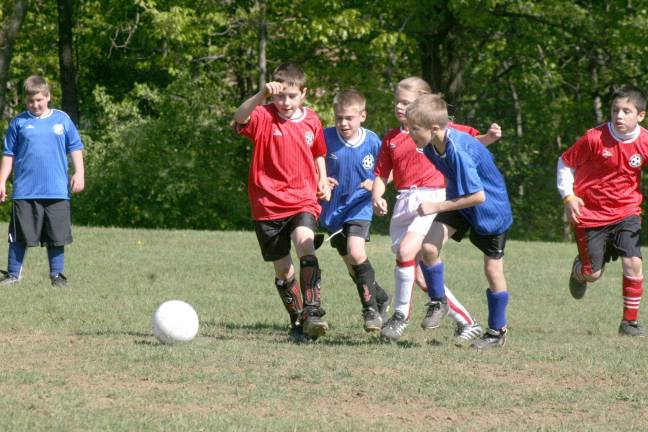Study finds no benefit in immediate surgery for ACL tears

By Jennifer Davis
Most amateur athletes who tear the ACL, or anterior cruciate ligaments, in their knees say that it starts with a pop, like the snapping of a rubber band.
Pain, swelling and an MRI scan to confirm the diagnosis typically aren't far behind.
Then patients have some decisions to make — whether to have surgery to reconstruct or repair the ligament, one of four that stabilize and support the knee, or whether to try rehabilitation and physical therapy to get back on their feet, first.
Increasingly, doctors have steered patients toward quick surgery for ACL tears, with the hope that a fast repair can prevent some of the long-term consequences of these injuries, which include osteoarthritis and tears of cartilage pads inside the knee called the menisci. But a new study has questioned that notion, concluding that many patients who first try a course of physical therapy to get back on their feet after an ACL tear, wind up with the same improvements in pain and function two years down the road as those who had immediate surgery.
The implication of the study is that many young, active adults could delay or avoid surgery altogether by giving physical therapy a try first, and they don't appear to increase their risk of osteoarthritis or further knee injury in doing so.
For the study, researchers from Lund University, in Sweden, followed 121 adults with fresh ACL tears for two years. Half of the group had immediate surgery. The other half were funneled to a physical therapy program, but they were given the option to eventually have surgery if they wanted it, or if their knees demonstrated continued instability — collapsing, for example, with quick changes of direction.
The participants ranged in age from 18 to 35, and they were all non-professional athletes.
Of the 62 people in the group who had rehabilitation plus early surgery, all but one had the procedure done. In the delayed surgery group of 59, 23 eventually had the procedure performed after an average of 11.6 months while 36 only did rehabilitation.
Over the course of two years, both groups reported substantial improvement in their injuries, and there were no significant differences in pain or function between the two groups.
Researchers say focusing solely on rehabilitation avoided surgery for 61 percent of that group without compromising their recovery.
“One thing I really liked about the study is it looked at the two groups and it didn’t say knee surgery or ACL surgery shouldn’t be done. It said, can some people get better and avoid surgery with an early diagnosis,” says Grant R. Koster, a physical therapist with AthletiCo Physical Therapy in Chicago, who was not involved in the study. “It shows there are options out there.”
But other experts caution that the approach used in the study shouldn't be broadly applied to all ACL injuries.
Not for everyoneDavid Altchek, MD, an attending orthopaedic surgeon at the Hospital for Special Surgery in New York City, says he has seen this approach work for more inactive patients or those who do sports like running that don’t require the knee to pivot. But he cautions against assuming it will work for everyone. “This whole concept is really dangerous when you apply it to young athletes,” he says.
The Swedish researchers do say tears to the meniscus, a wedge-shaped pad of cartilage that pads the inside of the knee, which are common after an ACL injury, were more aggressively treated in the early surgery group and more often untreated in the delayed surgery group, which often needed meniscal surgery during follow up.
American medical experts say that’s an important detail.
“Rehab alone can’t go in and change the meniscus like a surgeon can,” Koster explains. “We can’t go in and heal the ACL. That would only be done with surgery. But we can support the body structures around the ACL: the muscles, the tendons, the way your joint reacts. If we can train those other things, it can help compensate for a strained ACL.”
Dr. Altchek says meniscal tears are common in people who do sports that require them to pivot or quickly switch direction – like football, soccer, basketball or tennis. And he says they can be devastating for young and aggressive athletes, which he says make up the majority of his sports medicine patient population.
“The big problem when you don’t fix someone’s ACL and they go back to sports, they are at high risk of tearing their meniscus. So it’s very risky to tell a young athlete, let’s go back to sports without getting it fixed,” Dr. Altchek says. “We’ve seen some horrible outcomes where someone gives it a try – goes back to a pivoting sport with a brace after rehab without surgery and then shreds their meniscus. Sometimes you can fix it, but you can’t a lot of times.”
Koster says at the very least, he hopes this study will encourage doctors and patients to thoroughly discuss their options.
“If a surgeon says you need surgery, a patient doesn’t feel like they have lots of options. And that’s why I like this study because it gives patients options. A certain population can avoid surgery,” Koster says. “People with minor ACL tears and middle aged people who don’t do as much activity – they can be helped with nonsurgical intervention.”